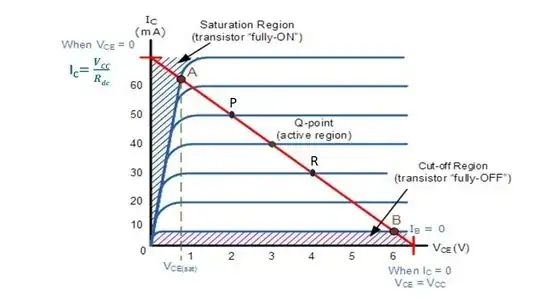 To know the values of \$I_{B},V_{CE}\$ and \$I_C\$
In the saturation region, all I have to do is look at the point A in the above figure, right? But that can't be the case since \$I_B\$
there is 1/100 times \$I_C\$, assuming β=100. However, the minimum \$I_B\$ needed for saturation, typically, is only \$\frac{1}{20}I_C\$ with a forced \$\beta\$ of 20. So, what am I missing here?
To know the values of \$I_{B},V_{CE}\$ and \$I_C\$
In the saturation region, all I have to do is look at the point A in the above figure, right? But that can't be the case since \$I_B\$
there is 1/100 times \$I_C\$, assuming β=100. However, the minimum \$I_B\$ needed for saturation, typically, is only \$\frac{1}{20}I_C\$ with a forced \$\beta\$ of 20. So, what am I missing here?
The figure in the question is adopted from this video https://youtu.be/QMI30-GxG5k?t=420
diode dropmagnitude. That's all there is to it. – periblepsis Dec 24 '23 at 19:29